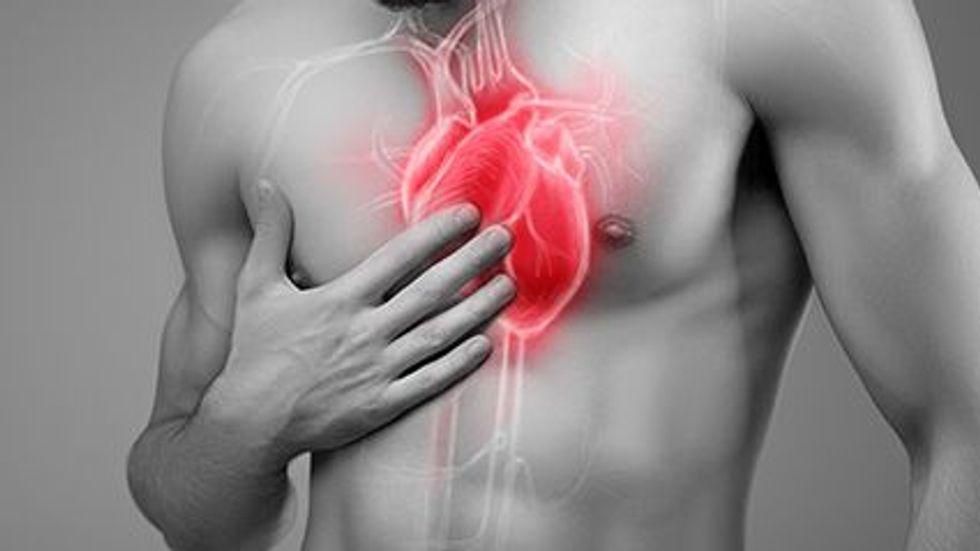
Imagine getting your tooth extracted and a bacterial infection develops afterwards that travels down to your heart.
Known as infective endocarditis, or bacterial endocarditis, it happens more often than you might think and it can be life-threatening.
Penn Medicine defines infective endocarditis as inflammation of the lining of the heart chambers and valves. Typically, it is caused by a bacterial infection; rarely, it can be caused by a fungal infection.
Cedars Sinai further explains that when the valves are not functioning correctly, it can be challenging for the heart to pump blood to the body, which may result in death. The infection can also cause the bacteria to form vegetations. These are clumps of blood cells, bacteria and other things in the blood. Vegetations are dangerous because they can travel to other parts of the body and cause more problems, like a pulmonary embolism (a clot in your lung) or a stroke. The vegetation can also block blood flow to an organ or extremity.
Infective endocarditis risk factors
- Intravenous drug use
- Hemodialysis for kidney failure
- Heart disease
- Congenital heart disease (present at birth)
- Poor dental hygiene
- History of endocarditis
- Artificial heart valves, or previous valve replacement
- Heart transplant with a leaky valve
- Weak immune system
Causes of infective carditis
According to Cedars Sinai, bacteria that usually reside in your digestive or respiratory tracts or on your skin can enter the bloodstream and find their way to the heart. The two most common types of bacteria to cause this infection are streptococci (strep) and staphylococci (staph). Rarely, a fungus may cause the same problem.
Dental procedures for people with a history of heart disease or valve replacement place the patient at an increased risk of infective endocarditis. Prevention is key, with the use of antibiotics often advised prior to dental treatment. Research published recently in the Clinical Medicine Journal states that, “Antibiotic prophylaxis is recommended for those individuals at high risk of developing endocarditis (prosthetic heart valves or valve repair, prior endocarditis and unrepaired cyanotic congenital heart disease [resulting in a low blood oxygen levels] or an unrepaired shunt) who are scheduled for dental extractions, subgingival [gum] scaling or manipulation of the gingival tissue [gums], teeth or oral mucosa.”
Symptoms of infective endocarditis
Symptoms of infective endocarditis, according to the Cleveland Clinic, include:
- Fever over 100 degrees Fahrenheit
- Sweats or chills, particularly night sweats
- Skin rash
- Pain, tenderness, redness or swelling
- Sinus drainage, headaches
- Persistent cough
- Shortness of breath
- Poor appetite, weight loss
- Muscle and joint aches
- Draining sore
- Sore throat
Infective endocarditis treatments
The Mayo Clinic advises that infective endocarditis is usually successfully treated with antibiotics. There may be a need to repair or replace damaged heart valves or remove any remaining infection from the heart. These procedures would require a surgery.
Antibiotic treatment for infective endocarditis typically occurs in the hospital setting, where the medications are administered intravenously. You will be closely monitored to ensure the infection subsides. If you are improving, you may be sent home on intravenous antibiotics. If a fungus causes the infection, then you would receive anti-fungal medications. Some people require lifelong anti-fungal medications to prevent the return of the disease.
The Cleveland Clinic adds that surgery is recommended when there are:
- Abscesses or aneurysms around the aortic valve
- Fungal infections with extensive valve damage
- Heart failure
- Large vegetations
- Mitral valve chordae rupture (tears in the chord-like structures that help your mitral valve function)
- Valves are not functioning correctly, because they are either stiff or leaking
Urgent surgery is recommended when there is:
- Cardiogenic shock or acute heart failure
- Antibiotic resistance
- Difficult-to-treat bacteria and fungus
- Blood clots after antibiotic therapy
- Sepsis (life-threatening emergency caused by the body having an overwhelming response to an infection)
- Pulmonary edema (too much fluid in the lungs)
Infective endocarditis is a serious medical emergency. You should seek immediate medical attention if you have any of the symptoms and risk factors outlined above.
Source: HealthDay

Leave a Reply